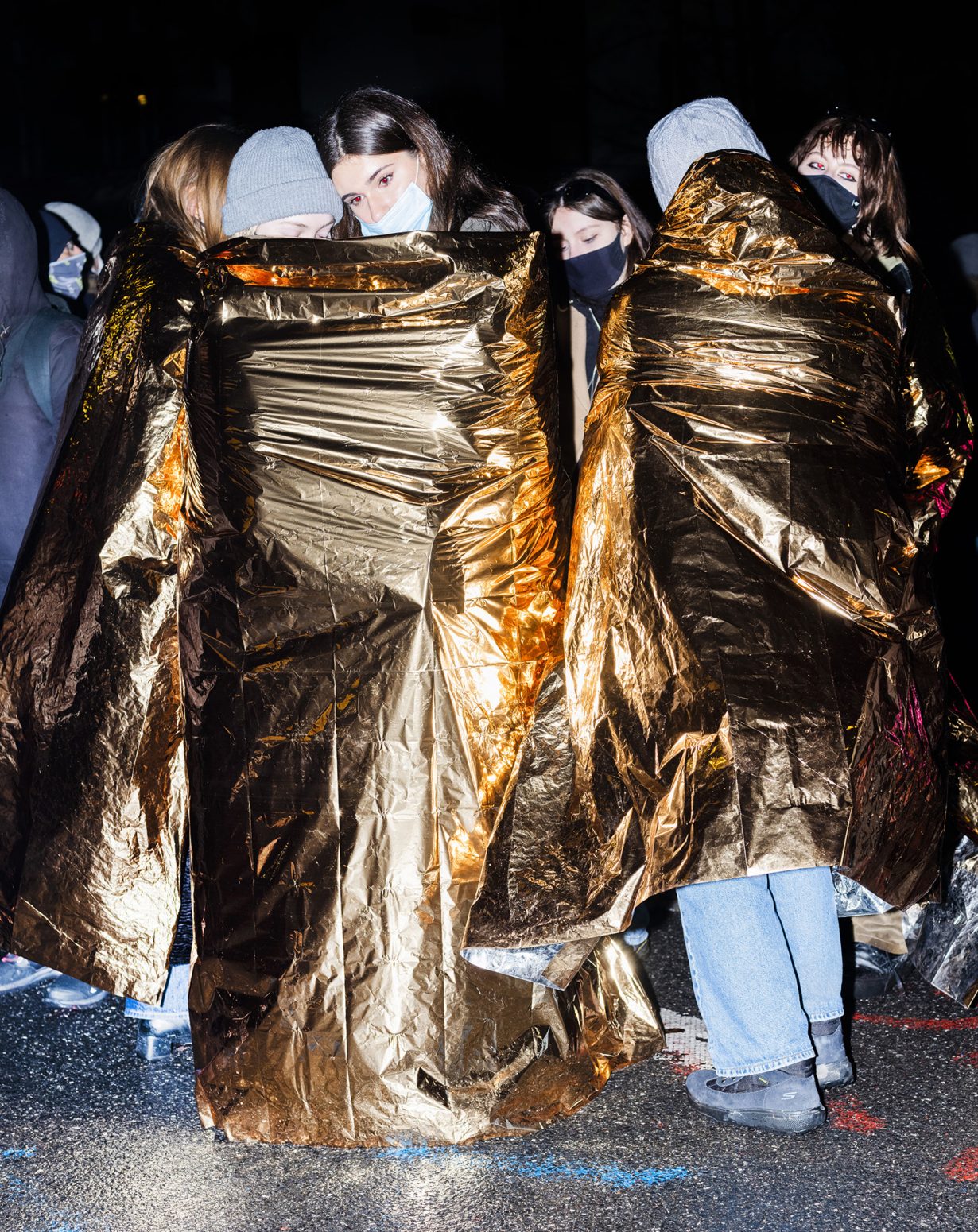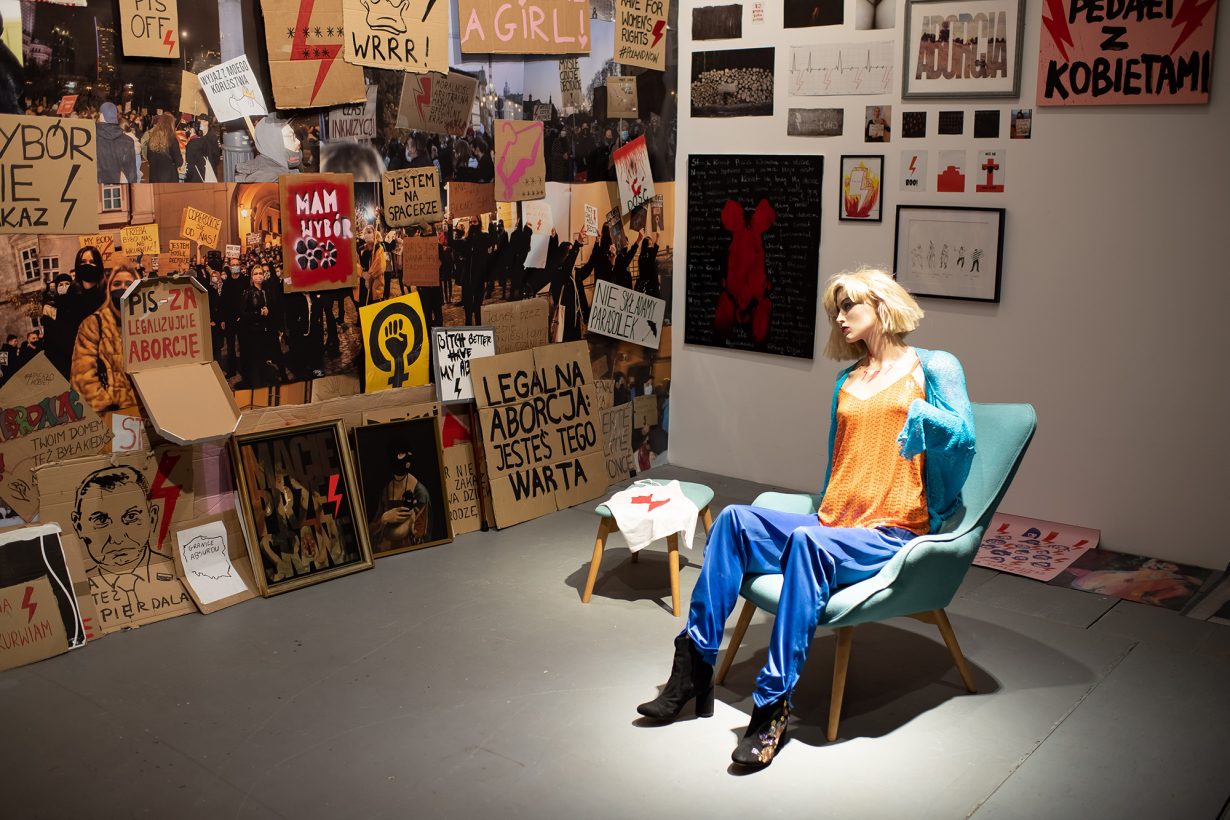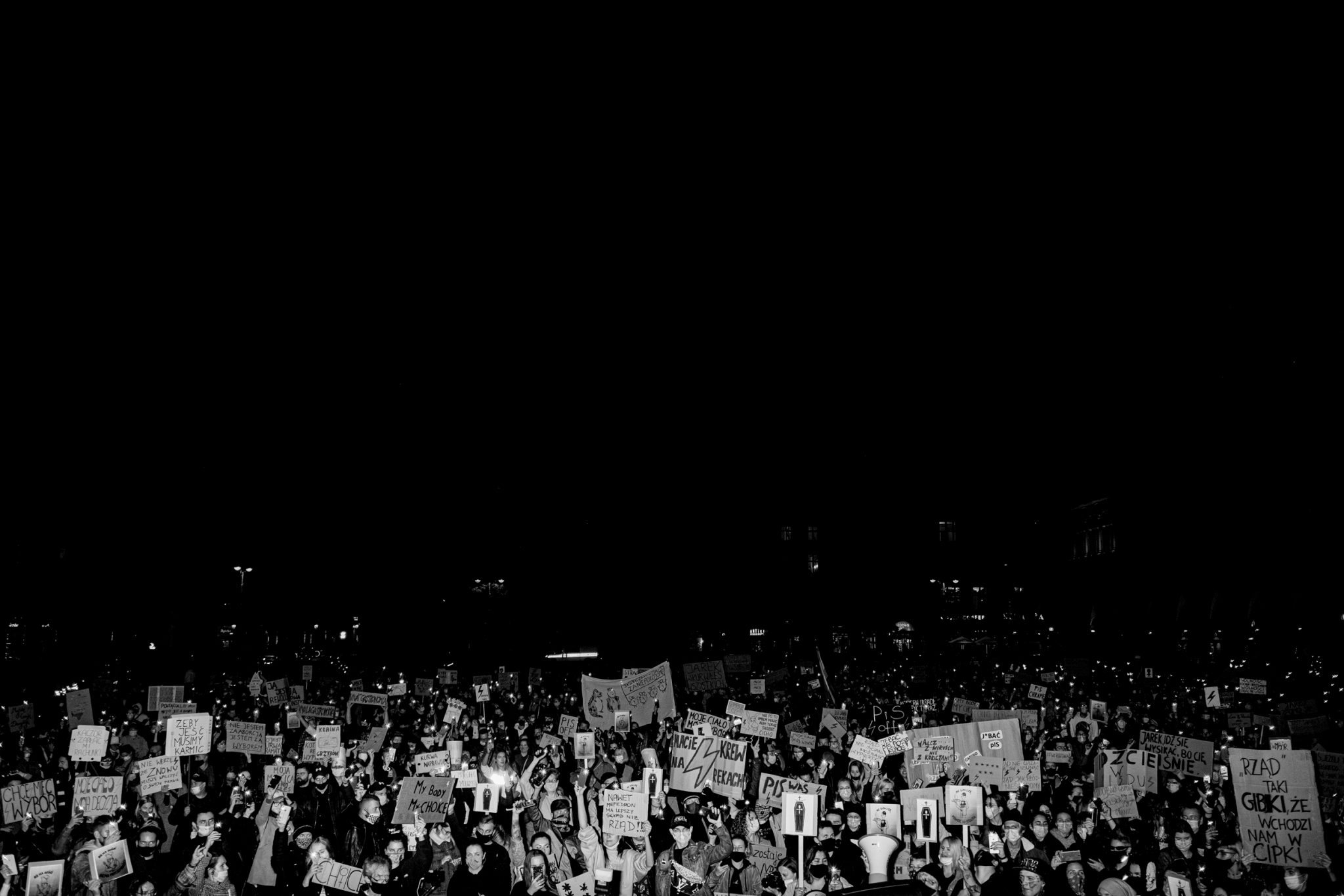It is debatable as to whether or not contemporary art has any major impact on politics at all. But recent antiauthoritarian protests in Poland suggest otherwise
Having lived under the fledgling authoritarian regime that took shape in Poland over the past decade, I’ve learned one lesson the hard way: political upheaval forces people to think and act anew. When museums, art galleries, contemporary art centres and other public art institutions are shaken to their core, and ‘business as usual’ no longer suffices, it’s not enough for art professionals to nostalgically long for the bygone era of (neo)liberal democracy, with all its inherent contradictions. One is compelled to seek out alternatives: more interdependent, transparent and egalitarian ways of working. I wouldn’t go so far as to present crisis as opportunity; authoritarianism and creeping fascism are adversaries not to be taken lightly. Yet when the future of democracy hangs in the balance, and the space for action and imagination remains open, the pressures can serve as an impetus for radical rethinking and reorganisation – including in terms of how we approach, practice and institute contemporary art.
It would be, of course, entirely idealistic to expect institutions or individuals in contemporary art singlehandedly to counter oppression; indeed, it is debatable as to whether or not contemporary art has any major impact on politics at all. However, looking at how the struggle for democratic polity unfolded in Poland, I would argue that the role of art in the antiauthoritarian turn should not be entirely dismissed. Artistic institutions and art workers played their part – primarily by embedding their activities in collective efforts greater than the artworld itself.
Take, for instance, the widespread participation of artists and artistic institutions in the feminist protests that swept through Poland following the government’s implementation of a near-total abortion ban in 2020 – a dramatic escalation of struggles that had begun back in 2016, when the Law and Justice government made its first major attempt at a total ban of abortion. This wave of protests ultimately contributed to the regime’s fall three years later. Let me offer a few examples of how artistic agents played a role in this upheaval.

One of the most evident contributions came in the form of exhibitions centred on feminist themes. Some – like Who Will Write the History of Tears (at the Museum of Modern Art, Warsaw, 2021) – offered an art-historical backdrop to the visual culture of the abortion struggle, highlighting the artistic legacy of feminist efforts and referencing pro choice campaigns in countries such as Ireland, the USA and Argentina. Others – such as those organised by Galeria Labirynt in Lublin (You’ll Never Walk Alone, 2020) – took a more interventionist approach, providing space for both artists and activists to express antiauthoritarian sentiments, forging links between what’s happening on the streets and in the exhibition halls. It is not even about numbers: an exhibition, even at a major museum, would typically attract fewer than 100,000 visitors over the course of several months – as many as took to the streets daily. Galleries still function as spaces for reflection and aesthetic experience, but they also become embedded in wider struggles for democracy – in this instance, for women’s rights.
At the other end of the spectrum was the broader visual culture of the protests themselves. Contemporary artists participated in demonstrations alongside fellow citizens – shoemakers, lawyers, students and others – and brought their creative skills into play. DJs contributed live sets, visual artists designed banners and protesters engaged in acts of subversion: reclaiming and repurposing elements of Polish protest iconography, such as the fonts and banners of the 1980s Solidarity movement, this time placing women’s rights at the centre. The protests were also flooded with humorous and visually striking props, many of which were not created by artists per se; some art historians began to speak of a ‘cardboard aesthetic’ – a makeshift, grassroots visual language that became emblematic of the movement. This aesthetic appeared not only in so-called ‘groves of banners’ – impromptu outdoor exhibitions by young artists in the gardens of the Museum of Modern Art in Warsaw and other institutions – but also within gallery spaces themselves. It became almost a custom that exhibitions of feminist art presented classics of feminist art alongside the visual culture of the protests. Some museums even began collecting protest banners as key artefacts of the visual culture of Poland during the 2020s.

Of course, the government wasn’t brought down because artists staged street performances, DJs played protest sets, protesters designed witty placards or museums organised solidarity exhibitions. But one could argue that all these actions contributed to the wave that eventually toppled the autocratic regime. A droplet in that wave – but a droplet nonetheless. Such political and aesthetic upheavals had real consequences for how we might reimagine the role of artistic institutions and individual artists. On the most basic level, artists and art institutions contributed to a common cause. Artists are just as vulnerable to police violence as other protesters – shoemakers, lawyers, students. Artistic institutions endure similar pressures to other institutions – including the press, the courts, universities – all of which are pushed to align with the ruling party’s agenda.
One of the banners carried into the streets during protests read: ‘Imagination is our weapon’. The ‘cardboard aesthetic’ wasn’t a style attributable to any particular artistic movement, but rather a shared sensitivity – a collective, subversive imagination activated in a moment of need. This atmosphere permeated both the street-level protest culture and the artworks exhibited in institutional white cubes. More specifically, these moments influenced how artistic institutions in Poland began to operate in alignment with social movements. By offering space and resources for exhibiting, self-expression and collective reflection on social and political transformations, they began to test new forms of common partnerships. It is precisely at this narrow point of contact – between grassroots, social self-organisation and more established institutional forms – that I see potential for reimagining how we might institute art in common.
Artistic partnerships’ emergence in the context of antiauthoritarian protests should not be dismissed as mere coincidence. They appear to surface across different countries where such struggles are unfolding, a pattern that may carry important implications for how we practise and share art. This deserves close attention – especially given how out of touch the dominant institutional models of the globalised artworld appear when it comes to today’s political urgencies. We do not need more of the same: largescale institutions, art fairs, biennales, flashy artworks or splashy auctions. Nostalgia for the ‘good old days’ of peak globalisation seems less reasonable than turning our focus towards – and actively working to build – artistic commons.
Kuba Szreder is an academic, researcher and curator based in Warsaw
From the Summer 2025 issue of ArtReview – get your copy.
